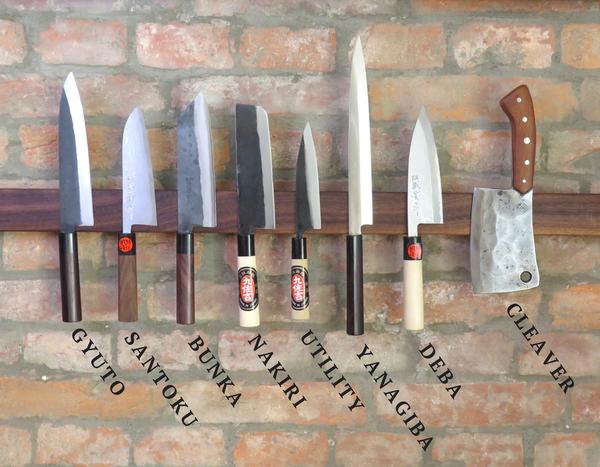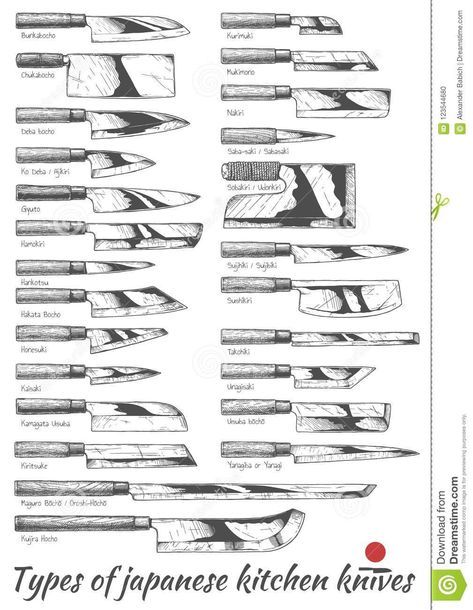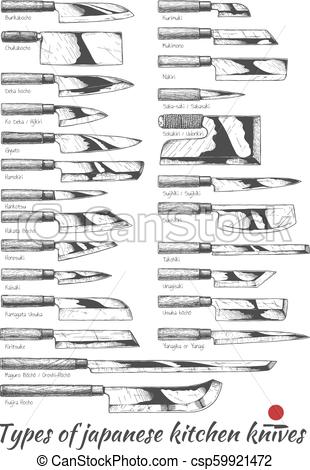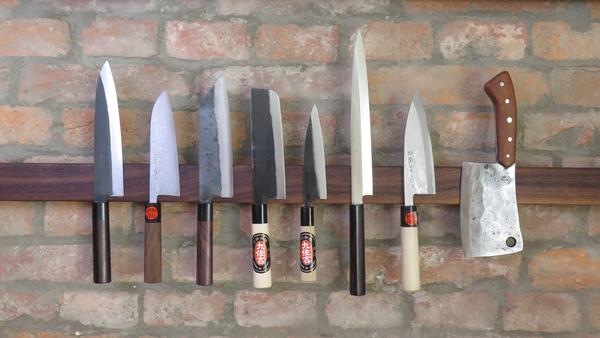If you enjoy cooking, consider putting a set of Japanese knives in your kitchen. Japanese knives are known for their ability to produce thin, precise cuts (similar to a sushi restaurant). Some Japanese knives also have intricate and beautiful designs on their handles, although there are knives that look simpler.
While both Japanese and Western knives are mainly used to cut and produce meat, there are some differences between the two. Japanese knives are usually lighter, thinner, and are made of high-carbon steel instead of stainless steel. They also have straight edges and steeper angles, which makes them very sharp.
When looking at various Japanese knives, keep in mind that some types of Japanese knives are very specialized and are designed to serve a specific purpose. While some Japanese knives are versatile, you want to make sure that you choose the type of knife that suits your needs.
Here are some types of Japanese knives that you might come across. And if you want to learn more about it, be sure to check it out The Japanese kitchen knife guide of the Kitchen Guy.
Santoku
The Santoku is a versatile knife that serves many general purposes. This is the knife that is used for chopping, cutting and dicing. It has a shorter blade compared to a western chef’s knife. It’s also flat instead of curved. This means that the knife has to be raised with every cut. However, with enough practice, many cooks can make quick and precise cuts with a Santoku knife.
Gyuto
Another popular Japanese kitchen knife is the Gyuto. This knife is very similar to a traditional western chef’s knife. It also has a slight curvature of the blade, which allows it to rock back and forth while cutting. The blade curves into a sharp point. This knife is normally used to cut and mince meat, but can also be used to cut vegetables. The knife is typically between 8 and 12 inches long.
Bunka
Another versatile Japanese kitchen knife that can do a variety of tasks is the bunka. The blade of this knife has a slight curvature. The edge of the blade also has a double bevel. This makes it ideal for finely chopping or chopping vegetables, but can also be used to cut meat if necessary. The blade of a Bunka knife is typically between 5 and 8 inches long.
Petty
Japanese small knives are usually between 3 and 8 inches tall. Most small knives are rather small, although the size of the knife depends on how it is used. The smaller sizes are used as paring knives for peeling products. The longer ones are used to cut meat. There are some similarities to that western vegetable knife, but small knives tend to make finer cuts.
Nakiri
Although the nakiri knife looks like a thinner meat cleaver, it is used to chop vegetables. It does not come to a point, but is flat and constructed so that the blade cuts the vegetables completely without the need for a reciprocating motion. It can slide easily through vegetables, making extremely precise cuts possible. However, this knife is not intended for meat and is not well suited for cutting cartilage.
Deba
The Deba is a Japanese kitchen knife intended for cutting fish. There are different types of Deba knives, each of which has a different function, e.g. B. cutting heads or filleting. It is also possible to use a Deba knife for other meat, e.g. B. for cutting through the connective tissue of chickens. However, it should not be used for bones or tough meat.
Yanagiba
Another type of Japanese knife that is commonly used in fish is the Yanagiba. This knife was specially developed for dandruffing fish and / or fillet fish. It is one of the knives that sushi can be made with. It is extremely long and narrow, similar to a traditional western fillet knife. The blade can be used to slide between the bone and meat of the fish.
Final thoughts
When it comes to buying Japanese knives for your cooking needs, trying to narrow down your choices can be overwhelming. While a full set may not be on the budget for most people, knowing why you need a Japanese kitchen knife can help you choose the right knife that suits your needs.
 TopsDecor.com Home Decor Ideas
TopsDecor.com Home Decor Ideas







